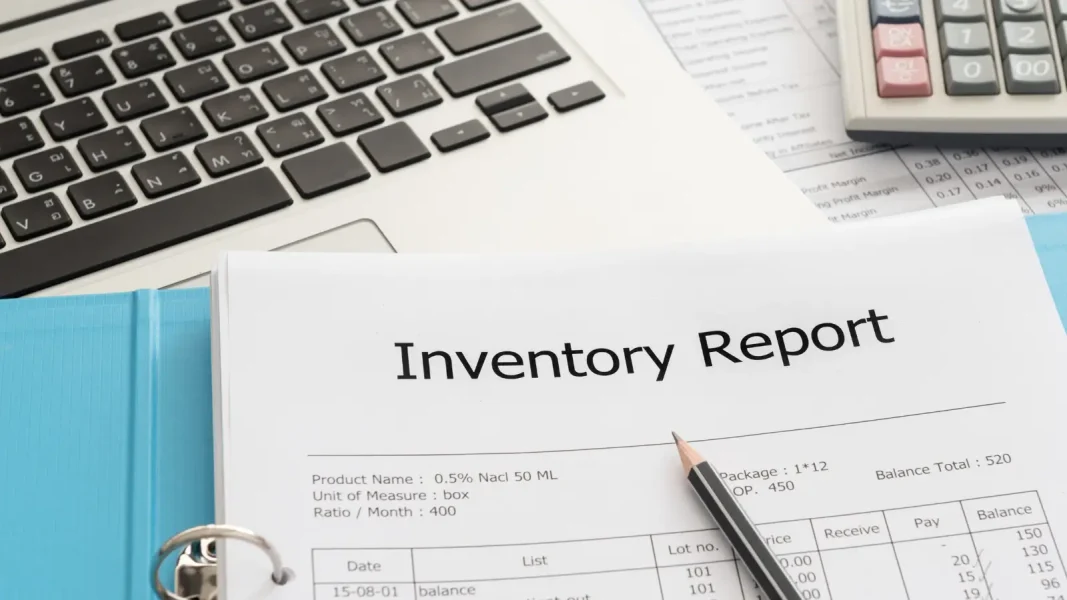In the pharmaceutical sector, guaranteeing the constant availability of essential medicines is an absolute priority. Pharmacies and healthcare professionals have to navigate in an environment where demand can fluctuate unpredictably.
Ensuring continuous supply without costly overstocking or critical shortages requires accurate demand forecasts and optimized inventory management.
This is where forecasting tools integrating advanced Machine Learning and Artificial Intelligence (AI )algorithmic engines come in.
The Importance of Forecasting Pharmaceutical Demand
Demand fluctuations
Changes in demand can be influenced by many factors, seasonal variations being the most predictable. In winter, for example, the demand for cold and flu remedies such as antivirals, decongestants and cough suppressants rises sharply. In summer, on the other hand, allergies and skin infections often trigger a surge in demand for certain products.
However, unforeseen epidemics present an even greater challenge. The COVID-19 pandemic illustrated the extent to which demand for certain drugs and medical equipment can explode unexpectedly. Vaccines, antibiotics, antivirals and even personal protective equipment (PPE) have become essential goods whose availability must be guaranteed in record time.
Public health campaigns, such as flu vaccinations, can also lead to significant fluctuations in demand. When governments and healthcare organizations launch mass vaccination initiatives, pharmacies must be prepared for a rapid increase in the need for vaccines and related products.
Finally, medical innovations play a crucial role. The launch of revolutionary new drugs, such as cancer treatments or gene therapies, can create sudden and intense demand. Pharmacies need to keep a close eye on developments in the medical field to anticipate these changes and adjust their inventories accordingly.
To manage these fluctuations effectively, pharmacies need sophisticated forecasting tools. Machine Learning and AI algorithms can analyze historical and real-time data to predict demand peaks with greater accuracy. These tools enable us to react quickly to changes, ensuring that essential medicines are always available to patients, even during periods of high demand.
Consequences of drug shortages
Drug shortages have far-reaching and varied repercussions on public health and pharmacy operations. Firstly, from a clinical point of view, treatment interruptions due tounavailability of drugs can have serious consequences for patients. For example, a shortage of antibiotics can lead to the uncontrolled spread of infections, while a lack of medication for chronic diseases, such as insulin for diabetics, can cause serious medical complications.
Shortages can also complicate the management of acute and chronic illnesses. Patients with chronic diseases require regular medication, and any interruption can worsen their condition. What’s more, in the case of acute illnesses, the absence of rapid, appropriate treatment can lead to prolonged hospital stays and an increased burden on healthcare systems.
From the pharmacy’s point of view, drug shortages can tarnish its reputation and affect the relationship of trust it has with its customers. Patients rely on pharmacies to provide the medicines they need. When these expectations are not met, patients’ frustration and disappointment can translate into a loss of confidence. This can drive patients to more reliable competitors, reducing loyal customers and negatively impacting sales.
The economic consequences for pharmacies can also be significant. Shortages can lead to additional costs associated with finding alternative solutions, such as sourcing from often more expensive secondary sources. What’s more, pharmacies can lose sales and profits when essential drugs are unavailable.
To avoid these disastrous consequences, it’s imperative that pharmacies implement robust inventory management and demand forecasting systems. AI and Machine Learning-based forecasting tools are particularly effective at anticipating shortages and optimizing stock levels. These systems can detect consumption trends, identify products at risk of shortage and recommend proactive actions to secure supply. By adopting these technologies, pharmacies can improve their resilience in the face of fluctuating demand, and guarantee constant availability of essential medicines for their patients.
The Contribution of AI-Based Forecasting and Replenishment Tools
Forecast accuracy
Accurate forecasts are crucial to the management of drug inventories in the pharmaceutical sector. AI and Machine Learning-based forecasting tools are revolutionizing this task by analyzing massive volumes of historical and real-time data to identify patterns and trends. These tools are capable ofhandling a multitude of variables, such as seasonal trends, local demographics, health alerts, and even customer purchasing behavior .
Thanks to these advanced analyses, demand forecasts become much more accurate and reliable. For example, by integrating data on seasonal flu trends and vaccination campaigns, AI tools can predict increased demand for antivirals and vaccines, enabling pharmacies to prepare accordingly. What’s more, by monitoring health alerts and epidemics, AI systems can quickly adjust forecasts to respond to unforeseen changes in demand.
The ability of AI-based forecasting tools to integrate diverse and complex data enables pharmacies to react proactively rather than reactively. This means they can adjust their stock levels before shortages occur, avoiding treatment interruptions for patients. This enhanced precision not only improves inventory management, but also customer satisfaction, as they can always count on the availability of the medicines they need.
What’s more, accurate forecasts help optimize pharmacies’ financial resources. By avoiding overstocking and understocking, pharmacies can reduce the costs associated with excessive warehousing or emergency purchases at higher prices. This leads to greater profitability and more efficient resource management.
Automated replenishment
Automated replenishment is another significant advance made possible by AI-based forecasting tools. Using intelligent algorithms, these systems can automate replenishment orders based on demand forecasts. This ensures that essential medicines are always available, while minimizing the risk of overstocking and wastage.
Automated replenishment systems analyze stock levels, product turnover rates and demand forecasts in real time to generate optimal replenishment orders. For example, if an algorithm detects an increase in demand for a certain drug due to a local epidemic, it can automatically place an order to increase the stock of that drug, ensuring that patients do not suffer shortages.
This automation considerably reduces the need for human intervention in the inventory management process. This enables pharmacists to concentrate on higher value-added tasks, such as patient advice and pharmacy management, rather than spending time manually managing replenishment orders. What’s more, automated ordering reduces human error, which can often lead to stock-outs or costly overstocking.
By integrating Machine Learning algorithms, automated replenishment systems can also learn and adapt to changing demand trends over time. This means that forecasts and replenishment orders become increasingly accurate, further improving drug availability and the efficiency of pharmacy operations.
Cost reduction
One of the major benefits of using AI-based forecasting tools in the pharmaceutical sector is the significant reduction in costs. Optimizing inventory through accurate forecasting helps minimize overstocks and shortages, thus reducing the costs associated with inventory management. In this way, pharmacies can improve their profitability while ensuring quality service for their patients.
When pharmacies can accurately forecast demand for drugs, they can avoid costly overstocking. Excess stock means additional storage costs, and the risk of certain drugs reaching their expiry date before being sold. By adjusting stock levels optimally, pharmacies can reduce these storage costs and minimize losses due to expired products.
What’s more, AI tools can reduce the costs associated with drug shortages. Out-of-stocks can force pharmacies to buy drugs at higher prices from secondary suppliers, or to pay express delivery charges to replenish stocks quickly. By proactively forecasting fluctuations in demand and automating replenishment orders, pharmacies can avoid these additional expenses and ensure continuous availability of medicines.
AI tools also help identify negotiation opportunities with suppliers. By anticipating long-term needs, pharmacies can negotiate more advantageous purchasing conditions, such as volume discounts or long-term contracts with fixed prices. This not only secures a stable supply, but also reduces drug purchasing costs.
Why choose an AI-based forecasting tool?
Equipping yourself with an AI-based forecasting tool represents a strategic step forward for pharmacies and other healthcare professionals. These cutting-edge technologies improve forecast accuracy, automate replenishment processes and reduce operating costs. What’s more, they offer crucial flexibility and adaptability in a constantly changing environment.
AI-based forecasting tools analyze massive volumes of historical and real-time data to identify trends and patterns. This in-depth analysis capability enables pharmacies to anticipate fluctuations in demand with unrivalled precision, guaranteeing continuous availability of essential medicines. What’s more, AI can take into account a multitude of variables, such as seasonal trends, health alerts and customer buying behavior, to adjust forecasts accordingly.
The adoption of AI-based forecasting tools is essential for pharmacies wishing to improve their operational efficiency, guarantee drug availability and offer superior service to their patients. These technologies represent a strategic investment that brings long-term benefits, both financially and in terms of customer satisfaction.
Adaptability and flexibility
AI-based tools stand out for their adaptability and flexibility, essential qualities for navigating the pharmaceutical sector, where conditions can change rapidly. In the event of a new epidemic, for example, these systems can quickly readjust demand forecasts and recommend appropriate replenishments, thus guaranteeing continuous availability of essential medicines.
This adaptability relies on the ability of AI tools to analyze data from a variety of sources in real time, such as epidemiological reports, health alerts and consumer purchasing trends. Thanks to these dynamic analyses, pharmacies can react proactively to unforeseen fluctuations in demand, avoiding stock-outs that could jeopardize patients’ health.
The flexibility of AI-based tools also enables pharmacies to adjust to changes in the business environment. For example, changes in health regulations or new public health guidelines can have a significant impact on demand for certain drugs. AI systems can quickly integrate these changes and adjust forecasts and replenishments accordingly.
What’s more, this flexibility makes it easier to manage seasonal inventories. AI tools can anticipate seasonal variations in demand and optimize stock levels accordingly, ensuring that pharmacies always have the medicines they need, whatever the time of year. In short, the adaptability and flexibility offered by AI-based tools are crucial to meeting unforeseen needs and guaranteeing continuous drug availability in a constantly changing environment.
Improving Service Quality
By adopting AI-based forecasting tools, pharmacies can significantly improve the quality of their service. By guaranteeing the availability of essential medicines, these technologies ensure that patients always receive the treatment they need, when they need it. Efficient inventory management translates into improved patient satisfaction, increased customer loyalty and a stronger reputation for pharmacies.
Accurate demand forecasts enable pharmacies to avoid stock-outs and overstocking, both of which can damage the customer experience. Patients who always find the medication they’re looking for are more likely to trust the pharmacy and return for future medical needs. This reliability helps establish a relationship of trust between the pharmacy and its customers, which is essential for long-term customer loyalty.
Finally, optimized inventory management and forecasting enable us to maintain a complete and balanced range of products. Patients thus have access not only to essential medicines, but also to a variety of parapharmacy and complementary healthcare products. This increased product availability contributes to a better overall experience for customers, reinforcing the pharmacy’s position as a one-stop shop for their healthcare needs.
Demand forecasts in the pharmaceutical sector are essential to guarantee the availability of essential medicines. By equipping themselves with forecasting and replenishment tools based on AI and Machine Learning, pharmacies can anticipate fluctuations in demand, automate their replenishment processes and improve the quality of their service. These technologies offer a robust solution to the complex challenges of inventory management, ensuring continuous drug availability and enhanced patient satisfaction.
Going further, it’s interesting to consider how AI can also transform other aspects of pharmacy management. For example, the personalization of patient advice can be greatly enhanced by AI. By analyzing patients’ health data and purchasing histories, AI tools can recommend personalized treatments and provide tailored advice, improving the effectiveness of the care provided.
Optimizing logistics operations is another promising area. AI technologies can optimize supply chains, reduce transport costs and minimize delivery times, resulting in smoother, more efficient inventory management. What’s more, AI can help predict future drug requirements, enabling pharmacies to prepare in time for any unforeseen fluctuations in demand.
In conclusion, ensuring patient health and satisfaction starts with intelligent inventory management – and the future lies in technological innovation. Pharmacies that adopt these innovative tools will position themselves advantageously in a constantly evolving sector. The integration of AI and Machine Learning is not limited to inventory management; italso opens the door to significant improvements in personalized care and logistics optimization, offering new prospects for the future of pharmacy.







